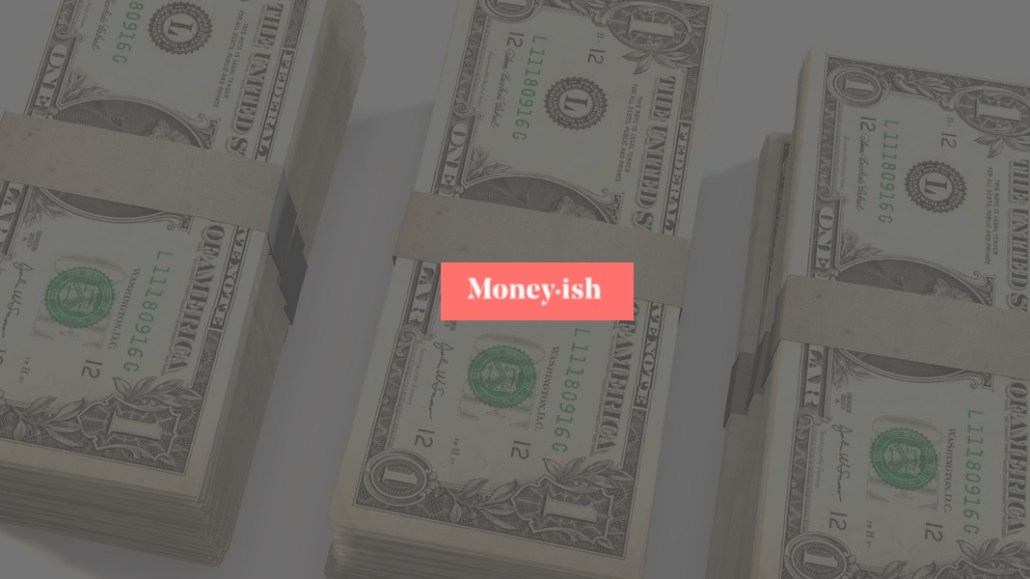
“It’s not personal finance,” Raakhee Mirchandani said. “It’s personality finance.”
This is the argument Mirchandani, senior content development editor at Dow Jones Media Group, makes for why Moneyish, her newly launched digital venture, isn’t competing with all the other millennial money sites out there.
Where sites like Vice Money, which launched in October, or Coinage, Time Inc.’s video-focused brand that bowed in February, or Mic Money, which went live last July (before turning into The Payoff), are focused on unpacking the day’s economic news, or telling people where to park their cash, Moneyish is more about the conversations and feelings that surround money. “I don’t see it as a crowded space,” Mirchandani said.
Whether Moneyish, which launches Monday afternoon, is running the same race as those other sites or not, the site is a carefully executed bet that DJMG can stand up a whole new editorial brand, separate from its established audiences, while still leaning on DJMG resources and partners to get there quickly.
“We think it’s worth the investment of time and resources,” said Dan Shar, gm of MarketWatch and Moneyish.
Moneyish grew out of an experiment. MarketWatch, Dow Jones’ Wall St.-focused brand, has long had a personal finance section, as well as a recurring column, Moneyologist, focused on the etiquette of money. But its personal finance team would often peg its work to the day’s or week’s news, and at Shar’s direction, the site began experimenting with pieces that were a little more irreverent, a little more expressly aimed at its social media audience, and a bit further removed from MarketWatch’s core voice. “We were trying to expand,” Shar said.
Those pieces consistently outperformed expectations, and before long Shar began thinking that it would be better if those pieces, and others like it, had their own place to live.“It should have been in an environment where the reader expected to see something besides tried-and-true market stories,” Shar said.
And so the wheels began turning, and on Monday, Moneyish launches as a finished product that looks and feel very different from MarketWatch, as well as the rest of the DJMG portfolio. It has a mobile-focused design, and big plans not just for video but also for comics and illustrations.
It’s also launching with several recurring series, including “Buy Cycle,” a comic strip about the relationships people have with their purchases (the first installment focuses on a person’s relationship with their Amazon Echo), and a video series hosted by Christopher Voss, a former hostage negotiator for the FBI, who will show viewers how to do things like negotiate a raise or escape a bad first date.
“The keywords are experimentation and learning,” Shar said.
Moneyish is also the second millennial-focused digital property Dow Jones has stood up in the past four months, and the third overall (it launched a slightly more specialized property, Barron’s Advisor Center, last October). The other one, Barron’s Next, a kind of stock market and investment explainer site, arrived last fall, and it’s already profitable, though with some caveats: Its editorial staff is very small, and a lot of the audience, advertising and production duties are spread across DJMG teams.
Moneyish, which has a core staff of five, will do the same. It will avail itself of DJMG resources, like its video and audience teams; it will also regularly call in to an established bullpen of freelance contributors. It’s also going to get a running start on social media: @Moneyish was built out of MarketWatch’s Personal Finance handle, which has over 91,000 followers.
But there’s one key way that Moneyish will stand apart. Unlike plenty of other vertical sites launched recently by established publishers, including its money-minded peers, Moneyish isn’t going to live inside a massive domain, protected from the harsh glare of advertiser scrutiny. It’s going to have to build its own audience. “We think it gives [Moneyish] its best chance for long-term success,” Shar said. “Short term, it’s going to be a little bit harder.”
More in Media

From sidelines to spotlight: Esports events are putting creators center stage
Esports events’ embrace of content creators reflects advertisers’ changing priorities across both gaming and the wider culture. In the past, marketers viewed esports as one of the best ways to reach gamers. In 2025, brands are instead prioritizing creators in their outreach to audiences across demographics and interest areas, including gaming.

Condé Nast and Hearst strike Amazon AI licensing deals for Rufus
Condé Nast and Hearst have joined the New York Times in signing a licensing deal with Amazon for its AI-powered shopping assistant Rufus.

Media Briefing: AI payouts may be entering a new era
AI compensation is evolving — and new models, not just publisher demands, are driving the shift beyond flat-fee licensing.





